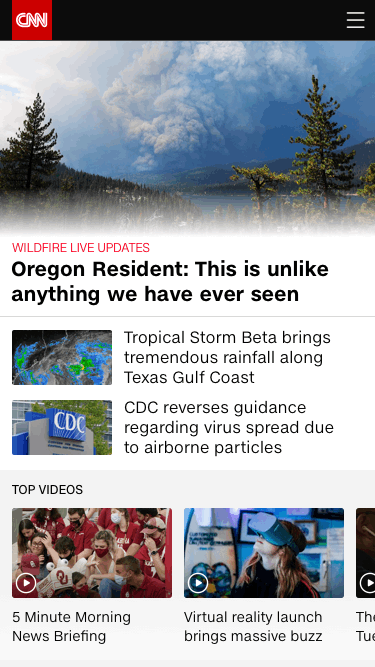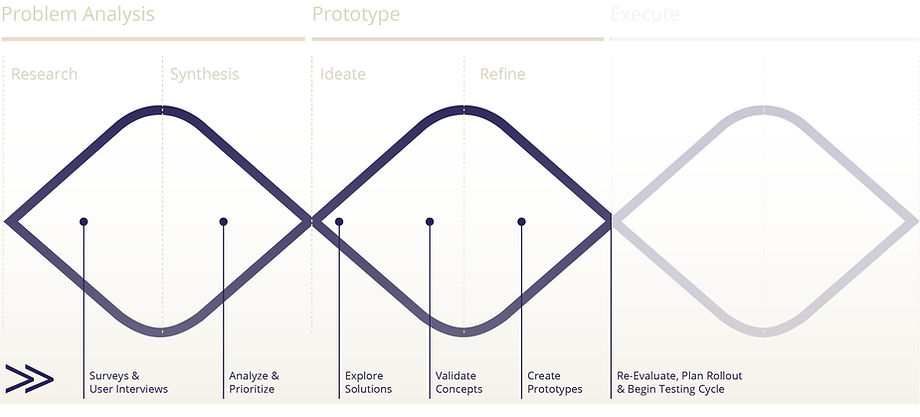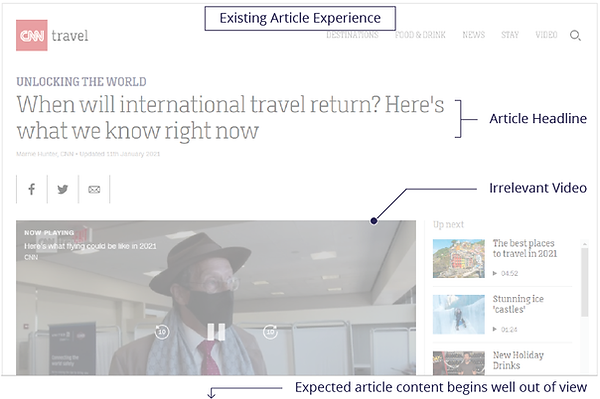Case Study
CNN - Playback Layer
CNN is a leader in news video, but with counter-productive business mechanics in play, users are not engaging with our online video content. In 2020, I set out to improve the video consumption experience, putting the user back in focus, with minimal business constraints. The output was intended to be a detailed concept for a broad product overhaul which will be released incrementally.
Role
Lead Product Designer Design Strategist
Delivery Type
Directional Prototypes
I Started with the Business Challenge
At the onset of this initiative two high-level goals were clear. This direction provided us with clear success metrics that would help us prioritize problems and opportunities.
1
Increase engagement by overhauling the video experience
As online video consumption across the internet continues to grow, the same can not be said for video plays on CNN.com. Growth is contracting and the expectation is that video consumption will be flat in 2021.
That is, unless we improve our product and content. Many user studies conducted over the last two years have shown that people want the format, but many factors contribute to their openness to watch.
This includes their needs/goals, the type of story they’re consuming, the physical environment they are in, and the device they’re using.
So, a broad challenge was born: Make it a better consumption experience. If we can make it easy to consume video when a user is asking for it, while staying out of the way of users that are not, we should see a lift in video engagement.

2
Devise a way to replace lost autoplay revenue
For years, media companies were benefiting from the ability to autoplay videos on page load. This meant that pre-roll ad revenue was very frequently
captured without the need for users to click play. Media companies quickly realized the huge revenue potential of auto-play and became accustomed to
the huge business advantages. Counter to that, it also became apparent that most users, in most cases, did not want videos to start automatically.
Mobile users could even be financially impacted due to the data wasted on unwanted streaming.
It was up to the publishers to keep their users happy, but automatically starting playback resulted in many more ad conversions. Thankfully, publishers of browsers stepped in and curtailed autoplay drastically.
Like many media publishers, CNN realized that revenue would decrease when autoplay functionality was removed from browsers. The unfortunate decision to ignore users for easy revenue didn’t keep business leadership from viewing this change as a loss of expected revenue. As a result, our product team was challenged to increase video consumption and new budgets were allocated to address this challenge.
Then, I Created a Plan
A variation of my baseline process that's focused on discovery, and conceptual prototypes.

I Analyzed the User Problems
I began the discovery process by diving deeper into user problems. We conducted IDIs and surveys to define areas of friction, and investigate the motivation for observed behaviors. I also created personas, identified key use cases, and mapped user journeys.
1
User trust in our video content has diminished due to a counter-productive publishing practice and short-sighted monetization tactics.
The strongest video engagement across the experience occurs at the top of article pages, while video entity pages are often abandoned before the majority of the content is played.
In response to this trend, motivated by pre-roll ad revenue, publishers are motivated to put a video in all trending articles. Unfortunately, most articles do
not have highly-relevant video coverage.
The resulting experience is that users repeatedly find loosely-related videos at the top of our most important articles, immediately adjacent to the headline, which is confusing and even annoying. Over time, users began to ignore video content.

2
Video playback is too tightly coupled to page views.
User news consumption clearly involves a desire to browse headlines, and bounce around our site. Behaviors typically include scanning headlines on our homepage, and jumping in and out of articles. Based on these observations, trapping video playback in individual pages is counter-intuitive.
3
When consuming headlines, the underlying content types are not apparent to many users.
This causes users who are expecting an article to quickly bounce from unexpected video entity pages. While this is not entirely a video consumption problem, we felt this problem needed to be considered, and optimization testing should be conducted on headline attribution.
4
Users are often compelled to watch a video, but don’t want to do so in their current physical environment, or on their current device.
I Presented Opportunities to Stakeholders
Based on our problem analysis, and as part of our transition from research and into ideation, I re-wrote the problems we discovered into a list of clear opportunities. They are effectively experience enhancements with strong indication of demand based on our problem analysis.
While not an official deliverable, I feel this was an important exercise to summarize our findings. The following is copied directly from my notes I wrote at the time:
-
Decoupling written content from video content
-
Removal of video from pages; which limits headline browsing
-
Playback should be continuous when initiated
-
-
Better positioning of related video content within articles
-
Providing optional related video content within articles to watch now, or save
-
-
Two types of personalized playlists
-
User-initiated custom playlists
-
Programmed playlists of other related videos; keeping users who are open to video engaged.
-
-
Implementing full user history for playable media
-
Displaying what has been watched on all instances of video content; helping to avoid repetitive playbacks which typically result in users stopping playback
-
-
Creating clear delineation of content types at the headline level
-
This opportunity was quickly moved to a new track of optimization testing, but remained a factor that we wanted to continue tracking.
-
I Created and Validated Solution Concepts
As we sketched a series of solution concepts, each idea was scrutinized. We used a variety of techniques to
-
Targeted Online Surveys
-
User interviews
-
Data Analytics
-
Solution A/B Testing
-
Usability Studies

I Then Refined the Concept and Presented
The resulting prototypes were presented to many stakeholders along with a presentation of our findings.
What's Next
-
Incremental roll-out has been planned and development of foundational tech has begun.
-
We intend to continue the delivery effort of this project for several months.
-
This includes deep UI design documentation, and development support.
-
Many tests have been written for the feature components.
-
We intend to add audio podcasts as part of the Media Playback Layer capabilities.
-
Research gathered during this discovery process has been leveraged by multiple teams, and has informed optimizations across the site.
















